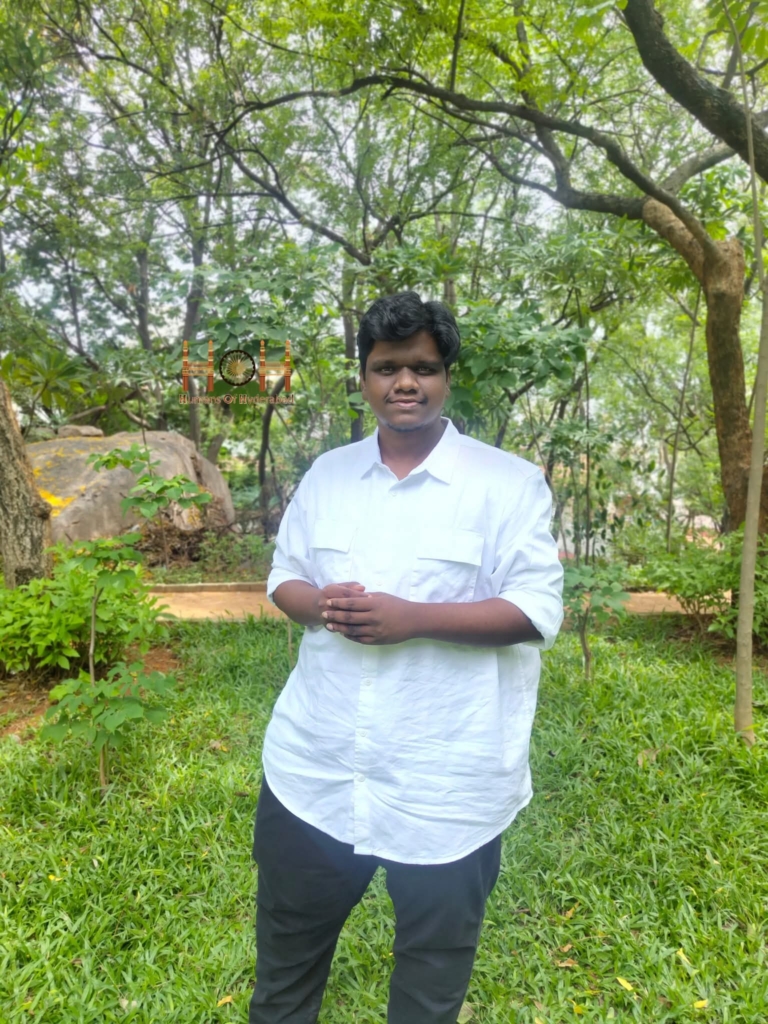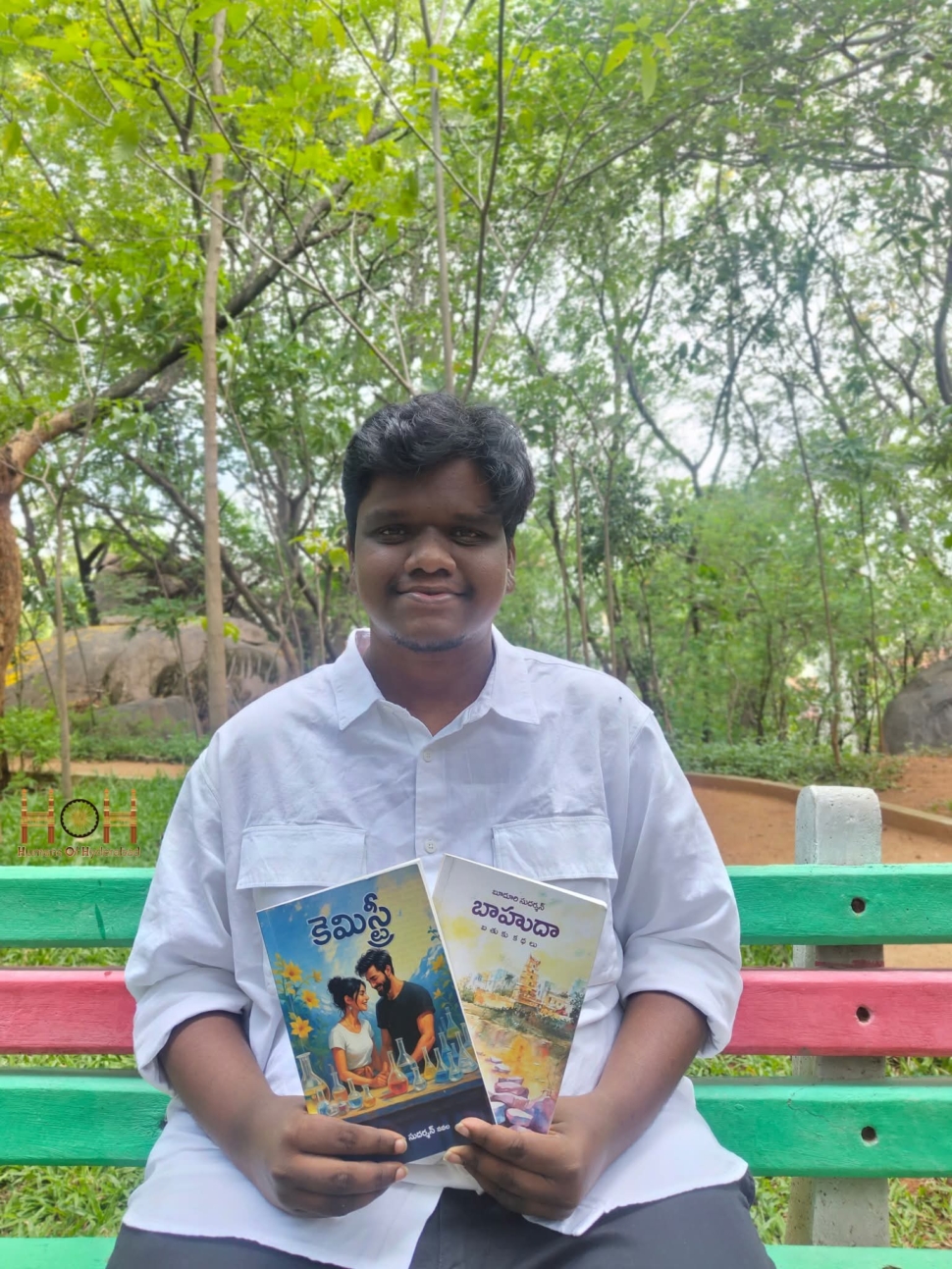“I spent my early childhood in Thirumalaiah Gari Palle, a small village in Chittoor, surrounded by the rawness of rural life, real people, and the kind of everyday happenings that would eventually become the backbone of my stories. My father, Paradesi, who now works as a conductor, was a teacher during those years. My mother, Chittemma, is a homemaker. After my father completed his teacher training, we moved to Tirupati. That shift from the village to a culturally vibrant temple town exposed me to a whole new world of language, customs, and people. Until 3rd grade, I studied in my village. From Class 3 to 8, I lived in Tirupati. After that, I returned to the village once again. These transitions between rural and urban life, different schools, and the variety of environments I experienced had a lasting impact on how I see the world and the way I write.
I began writing in Class 8, mostly observations and small thoughts that slowly grew into a habit. It was during my college years that I felt a stronger pull toward literature, especially novel writing. Around that time, I moved to Hyderabad during my fourth year of BTech. I later pursued animation, which added another creative lens to how I viewed characters and narratives. Even though I had been writing consistently, I didn’t publish anything officially until 2021.
My first publication was a short story titled Rendo Mogudu. It was followed by others like Rathanala Vana, Chinukula Alajadi, and Pedda Cheruvu Sakshiga, each of which received good reception among readers. But the book that marked a turning point in my writing journey was Baahuda Bathuku Kathalu.
Baahuda Bathuku Kathalu is a collection of 20 short stories that reflect the lives of people I’ve known, seen, or heard about across my village and its surroundings. Each story touches a different phase of life, from birth to death, and captures emotional moments with honesty. During the lockdown, I would step out pretending to buy rice bags or masks, but the truth is I was out collecting stories. I revisited familiar faces, spoke to people from my childhood circle, and discovered small but powerful life events that shaped the collection.
This book is not just about storytelling. It’s about preserving the essence of Rayalaseema — the dialect, the everyday life, the land, and the emotional layers of the region. One of the strongest influences behind this book was Jhansi Papudesi. Her bold use of local dialect, slang, and her refusal to dilute the native flavour of stories gave me the confidence to write in my own voice. When I was working on Baahuda Bathuku Kathalu, it was her literary presence that encouraged me to stay true to the culture I belonged to. She showed me that nativity is not a limitation. It is strength.
After Baahuda Bathuku Kathalu, I went on to publish Chemistry, a love story that came out nearly three and a half years later. The response it received was truly encouraging. Half the credit goes to my editor Kadali Sathyanarayana garu, a respected writer in contemporary Telugu literature. The book was published under her own publication house, which added even more value to the process.
Though Baahuda and Chemistry are very different in style and tone, I wrote both with the same commitment to stay close to reality while shaping stories that people can connect with. I believe fiction has its place in literature. Not everything we write can be real, but it must feel real. I often take inspiration from actual incidents and tweak them where needed, but always with consciousness. My effort is to keep that balance between fact and fiction without losing the emotional core.

My writing process is structured. I begin with a blank notebook and jot down what I want to say. I outline characters, give them names that reflect their background, think about the locations, and identify emotional points that drive the story. Every character has something unique, and many of these details come from years of reading literature and observing life closely. Cinema also plays a role in how I visualise scenes and moods.
Writers who have inspired me since childhood are Yaddanapudi Sulochana Rani, Yendamuri Veerendranath, Chalam, and Sri Sri. I continue to admire the works of Jhansi Papudesi, V Mallikarjun, Kadali, Manasa Yendluri, and Rubina Parveen — not just for their writing but for how firmly they stand by nativity, voice, and character integrity. I also follow Sunday magazines regularly to stay connected with how storytelling is evolving and how today’s writers are approaching the craft.
Currently, I work as the Creative Head at Houseful Digital, a digital media marketing agency. Balancing work and writing isn’t always easy, but it helps me stay in touch with both the creative and practical sides of life. Writing isn’t something I do separately from my daily routine. It is very much a part of how I live, observe, and process everything around me.
When we talk about contemporary Telugu literature, I feel it’s going through an exciting phase. Many young writers are trying new things, experimenting with format and language. But there’s also some confusion among a few veterans when it comes to these newer approaches, especially the blend of Telugu and English. My view is simple. Literature must reflect real life, and today’s life is a mix of languages and styles. We don’t ask for celebration. All we ask is to be read with sincerity.
There’s a belief that young writers aren’t producing meaningful literature anymore. I disagree. I see many of them writing with clarity and commitment. What we need is honest reviewing and more understanding between criticism and opinion. The readers today are more open-minded than ever before and connect well with stories that reflect their own lives.
Telugu literature has always been strong. It doesn’t have to prove itself. As long as we continue to write with honesty and purpose, it will only move forward. For me, the journey is still unfolding. There are many more stories I want to tell. Stories that are waiting to find their way to the page.”
— Booduri Sudharshan
